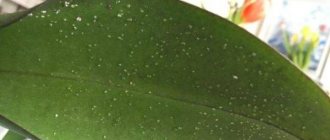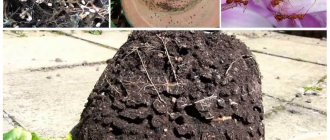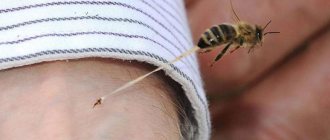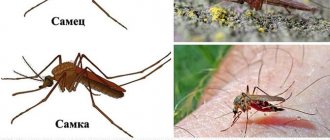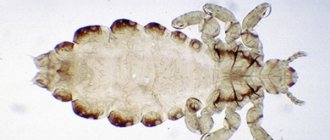The earth is oversaturated with mineral fertilizers
If you overfeed a plant with a mineral complex, it will not be able to absorb all the fertilizer entirely. After watering, excess fertilizer will evaporate along with the remaining water and interact with carbon dioxide released by the plant.
This will turn the mineral salts into a whitish sediment that will remain on the surface of the soil. In this case, you need to stop feeding the flower and carefully replace the top layer of soil (1.5-2 cm) with a new one.
The main thing is not to damage the root system.
Mold control methods
The constant moisture of the soil provokes mold infection, and the flowerpot becomes a real nursery. Proper watering and free drainage holes prevent stagnation. But what to do if the soil is already contaminated and there are bugs?
- Stop watering.
- Dry the root system.
- Replace the top layer of soil to a depth of 2-3 cm.
If these measures are not successful, then it will be necessary to completely replant the plant.
You may be interested in:
There are midges in indoor flowers: how to get rid of them at home Almost every apartment has a so-called green corner in which flowers and other flowers grow safely...Read more...
Transplanting a plant
To do this, the earthen ball along with the roots is pulled out of the pot and left to dry for 2 days. If a ceramic pot is used for planting, then it needs to be boiled for 20 minutes; if the pot is plastic or plastic, it is better to get rid of it, since there are fungal spores on its edges that will still remain fertile for several years.
After two days, you need to gently shake the roots and disinfect them. The old soil should be thrown away, and before planting, the new soil should be steamed in a water bath or in the microwave.
Expanded clay must be placed at the bottom of the pot, then soil is poured, a flower is planted and the top is sprinkled with coarse river sand. What will it give? First of all, regulating the flow of air to the roots, and therefore reducing humidity. This method of planting will also help if the overflow is small and accidental.
Soil disinfection
The soil disinfection method is considered one of the most effective. It not only helps eliminate odor and mold, but also completely destroys spores.
The procedure is carried out according to plan:
- Clear the roots from the soil as much as possible.
- Collect the soil and put it in a container.
- Pour boiling water over it.
- Pierce in the oven for 30 minutes.
- Cool completely.
- Treat the pot with a disinfectant.
- Pour the soil into the pots and plant the plant.
The soil can also be kept in a water bath. For this purpose, pour water into a pan, place a colander or sieve on top with gauze folded in several layers. When the water boils, add soil and cover with a lid. The soil is steamed in this way for at least 30 minutes. The plant is planted after the soil has completely cooled.
The soil must be fertilized or fed with minerals; you can add yeast.
You may be interested in:
Lobelia ampelous: planting and care Lobelia is a very beautiful and delicate flower that a gardener simply cannot help but like. The flowers of this plant are very…Read more…
Store-bought mold repellents
The purchased products are great for removing mold. Today they are sold in large quantities in specialized flower shops. The seller will select the necessary preparation for its intended purpose for treating the soil cover or the plant itself, and will tell you what to do with it.
Important!
You should always pay attention to the instructions, which indicate what plants it is intended for. Otherwise, the flower may get burned or die.
Also consider the parameters for choosing a chemical:
- Features of the plant.
- For what type of soil?
- Availability of applied fertilizers over the last month.
- The amount of fungal infection spreading.
It is best to select a ready-made solution of organic origin. They already contain ingredients that block the further proliferation of fungal spores in the soil.
Overmoistening
With each watering, a small part of the moisture evaporates from the surface of the earth. If you regularly over-water the flower, the process will become more intense and a whitish salt coating will appear on the ground. The situation can be worsened by heavy, unloosened soil, a poorly organized drainage system and high indoor humidity.
To eliminate plaque, first reduce the frequency and intensity of watering. Also be sure to check the drainage (if the holes in the bottom of the pot are clogged, excess water will drain too slowly). In addition, do not forget to loosen the soil after each watering.
If these procedures are not carried out, over time the root system will begin to rot and the flower will die.
Lack of moisture
Dry soil is no less harmful than waterlogged soil, so do not forget to regulate the intensity and frequency of watering. Most often, this problem occurs when the indoor air is too dry, which happens in winter (due to heating devices) or in the summer months (during extreme heat).
Under such conditions, moisture evaporates too quickly, and salt deposits remain on the soil surface. The problem is that salt appears not only from above, but also inside the soil, which has a negative impact on the development of the flower.
To avoid this, use a special humidifier or simply place a bowl of water next to your flower pots.
How to treat
It is necessary to get rid of the problem based on the reason that caused it. That is, you first need to find out why the plaque formed, and then eliminate this reason: water less, feed more modestly, transplant the plant into a pot of a suitable size, etc. There are also universal tips that will help in any case.
Mulching with expanded clay
To prevent the formation of plaque, it is recommended to sprinkle the top of the soil in the pot with fine expanded clay. This powder will act as mulch and protect the soil from too rapid evaporation of moisture.
You should check the expanded clay from time to time to see if there is a suspicious coating on it. If this happens, remove the powder from the pot and rinse it with water. Then put it back in the old place.
Watering with too hard water
Tap water contains various impurities, such as lime and salts. If you do not settle such water before watering the plants, all the harmful substances contained in it will remain on the surface of the soil and turn into a white coating.
Outwardly, it resembles small whitish granules that can be easily removed from the pot. Since there is often clean soil underneath, many gardeners simply remove the lime granules along with the top layer of soil, adding a little fresh soil.
But this is not the best option, because watering many flowers with unsettled water can be harmful. Instead, it is better to let the liquid sit for at least a day or buy bottled water.
Increased soil acidity
To reduce the acidity of the soil, which causes moss and mold to spread throughout the area (and this is detrimental to plants), you need to take the following actions:
- Add tree resin to the soil; this should be done from time to time. But not too often.
- Add lime to the soil.
- Dolomite flour added to the soil effectively eliminates soil diseases.
Norms for soil acidity levels.
It is advisable to add these fertilizers to the soil at the time of digging up the earth, before planting and after harvesting. In this case, the soil in the greenhouse will not deoxidize, causing mosses to stop appearing.
To ensure that plants grow well in the soil and produce a harvest, do the following:
- Sprinkle lime on the soil and do not dig up the soil.
- After this, sow green manure - this is a fast-growing grass.
- After the grass sprouts, plant seedlings of other vegetable crops in the soil.
- After the seedlings have taken root, the grass is mowed and subsequently used as mulching material.
Infection
If you constantly flood the plant and keep it in a room with high humidity, sooner or later this will lead to the appearance of whitish fungal mold on the surface of the soil. But this is not the only reason for the problem.
The infection can get into a flower pot with new plants or when transplanted into poor-quality soil. Curative or systemic fungicides can be used to eliminate the problem.
By the way, the latter type of drug is suitable not only for eliminating, but also for preventing fungal diseases.
To avoid the appearance of a white coating on the soil surface, follow the rules of flower care and regularly check them for fungal infections. If plaque does appear, proceed to eliminate it as soon as possible.
Correct crop rotation in the greenhouse
In order for plants to grow well in a greenhouse, proper crop rotation must be observed. To do this, you need to know which plants like well-fertilized soil and which less fertilized ones.
Therefore, plants are divided into the following groups:
- Plants with low fertilizer consumption.
- With average fertilizer consumption.
- With high fertilizer consumption.
It is necessary to be able to alternate planting of such plants. For example, tomatoes consume a lot of fertilizers, and after harvesting, other plants with the least fertilizer consumption can be planted in this place.
Some tips for proper crop rotation.
Do not grow one variety of vegetables in the same place for years, alternate crops, this will avoid soil fatigue.
Select suitable neighbors from vegetable crops. For example, tomatoes and sweet peppers coexist in one garden bed. And basil planted nearby will also improve the taste of tomatoes, at least that’s what avid gardeners say. But it’s best to plant dill next to cucumbers.
There are plants that can repel parasites. For example, calendula and marigolds repel aphids and nematodes. And nasturtium whiteflies and aphids. To avoid soil diseases, use only high-quality planting material and fertilizers.
At the end of the season, do not neglect cleaning the planting material and cleaning the greenhouse. Remember that in a polycarbonate greenhouse, plants grow better and the soil suffers less.
